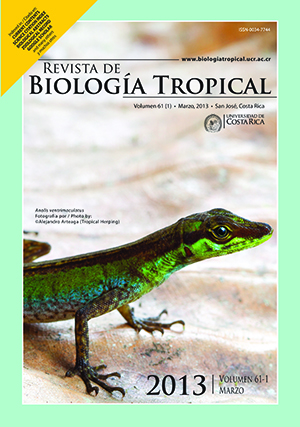Resumen
La parte noreste de la India se extiende sobre una superficie de 262 379km2 en la cordillera oriental del Himalaya. Es un punto de acceso con altos niveles de biodiversidad y endemismo; desafortunadamente, también es una zona poco conocida, sobre todo su diversidad microbiana. En este estudio se evaluó la diversidad de bacterias cultivables del suelo, su diversidad y distribución de las tierras bajas a las altas (34 a 3 990m.s.n.m). Se caracterizaron los parámetros físico-químicos del suelo y tipos de bosques a lo largo del gradiente altitudinal y se correlacionaron con la distribución y diversidad bacteriana. Los microbios del suelo se cultivaron en placas de agar enriquecido Muller Hinton y Luria-Bertani, e inicialmente se caracterizaron mediante métodos bioquímicos. Parámetros tales como actividad de la deshidrogenasa y ureasa, temperatura, contenido de humedad y de carbono, pH y densidad aparente del suelo se midieron en cada sitio. Aislamientos representativos también se sometieron al análisis secuencial de 16S rADN. Un total de 155 aislamientos bacterianos cultivables se caracterizaron para estimar los índices de riqueza, equidad y diversidad. Los bosques tropicales y subtropicales albergan una mayor diversidad bacteriana en comparación con los bosques templados de pino y coníferas, y los bosques subalpinos de rododendro. El análisis filogenético de 16S rARN reveló que Firmicutes fue el grupo más común, seguido de Proteobacteria y Bacteroidetes. Especies pertenecientes a los géneros Bacillus y Pseudomonas fueron las más abundantes. Las UFC bacterianas mostraron una positiva pero insignificante correlación con los parámetros del suelo, tales como pH (r=0.208), temperatura (r=0.303), temperatura ambiente (r=0.443), contenido de carbón (r=0.525), densidad aparente (r=0.268), ureasa (r=0.549) y deshidrogenasa (r=0.492). La altitud (r=-0.561) y el contenido de humedad del suelo (r=-0.051) mostraron una correlación negativa. Se encontró que el gradiente altitudinal, junto con la vegetación y los parámetros físico-químicos influyeron en la diversidad bacteriana y la distribución. Este estudio señala que este es un bioma con un vasto reservorio de bacterias que disminuyen con la altitud y pone en relieve la importancia microbiológica de la pobremente estudiada zona del este del Himalaya, lo que justifica los esfuerzos para explorar la prevalencia de nuevas especies en el bioma.##plugins.facebook.comentarios##
Descargas
Los datos de descargas todavía no están disponibles.






